How removing 4 dams will return salmon to the Klamath River and the river to the people
KLAMATH, Calif. — The fog that helps define Northern California's famed "Lost Coast," a green and lush world biosphere reserve, took on a sepia hue on this August morning. Smoke from the Smith River Complex Fire, burning along the Oregon border, mixed with the damp air and added a woody tang to the back of the throat as visitors arrived in the small town of Klamath, home to the Yurok Tribe.
The unmistakable odor of exhaust from gas-powered generators mingled with the wildfire smoke. Businesses and homes were struggling to keep the lights on and food fresh in the wake of a countywide power outage. The local utility, anxious to avoid sparking more fires or supercharging existing fires, had switched off the electricity two days before.
But power or not, the town crackled with activity. Vendors offered handcrafted abalone jewelry, local honey, wood crafts, T-shirts and hand-blown glass. They assembled tables and shade tents along Klamath Boulevard, the small town's main drag. Parade floats and two marching bands were ready, and tribal leaders filled bags with candy to hand out to the crowd expected for the 59th Annual Yurok Salmon Festival.
Amid the bustle, one essential element of the festival was missing: the salmon.
After a catastrophic spring decline of Chinook salmon making their way upstream to their spawning waters, the Yurok Tribe canceled its 2023 subsistence and commercial fishing seasons.
Even when subsistence fishing was allowed, the quotas over the past decade resulted in fewer than one salmon per tribal member. Some people blamed the drought, some the competing demands for water, but for most in the tribal communities, the culprits loomed large on the river: A series of hydroelectric dams had altered the Klamath’s flow more than a century ago, creating an unnatural system that left fish and people high and dry.
Walking along the parade route, Yurok tribal member and salmon protector Georgianna Gensaw said tribes in Washington state had helped out with salmon at other times when the tribe had canceled the fishing season.
"They continued to make that offer and we're grateful for that," she said. “But this year it was more important for Yurok to express the situation that the Klamath River's in, and to drive that home." Gensaw said if the tribe can't give its elders salmon from the river, they couldn't justify selling plates of it at a festival.
Subsistence plays a large role in keeping food on tables up and down the Klamath River. Salmon fishing, acorn harvesting, hunting, home gardening and native food gathering all help keep families fed.
The lack of salmon over time has created substantial hardships for the Yuroks, since the closest grocery stores are in Crescent City, a 1 ½-hour round trip, or Eureka, more than 60 miles south down U.S. Highway 101, where drivers contend with elk crossings, steep mountain grades and the occasional massive trunk of a redwood tree encroaching on the traffic lane.
That same sense of independence extends to other facets of life along the Klamath. Both Native and non-Native people who live in this remote area tend to be self-sufficient. Some homes in the Yurok Tribe’s lands still don’t have electric service they don’t generate themselves, and some tribal members only gained access to the grid about 10 years ago.
Yet most residents held onto their generators, as they’re usually the first to get power cut when wildfires like the Smith River Complex threaten to bring down high-power lines, or when storms blow local lines down.
Though some of the reservation is connected to the grid at least part of the time, one of their schools only got electric service in 2018, and still relies on a radiophone and satellite internet for communications.
But tribal communities along the Klamath face more than just losing a vital food source. They lost their connection to the land, to their history. Fishing, along with gathering and preparing acorns or other foods, medicinal or basketry plants, and other such activities brings families together. Parents, aunties, uncles and grandparents pass culture down to younger generations. Youths learn not only how to make a fishing net but how to be grounded in their world, giving them purpose and hope that they too can live and prosper alongside their own children on “the river” for generations to come.
When the fisheries are closed, both kids and adults often founder in despair. Suicides, domestic violence and juvenile delinquency spike.
Over the past 170 years, the once-abundant river has suffered injury and some near-death experiences, including a catastrophic fish kill in September 2002. The river fell victim to governmental mismanagement that thwarted four California tribes’ efforts to steward their ancestral lands and waters, drained a lake in far Northern California and southern Oregon that fed the waters, and terminated the sovereign status of the Klamath Tribes and its three cultures that call Upper Klamath Lake and surrounding lands home.
One tribe, the Shasta Indian Nation, lacks federal recognition, further complicating Indigenous stewardship efforts.
Gold mining, clear cutting, overgrazing, water-intensive crops in a high desert region and hydroelectric and irrigation dams that eviscerated salmon and other anadromous fish populations all contributed to the Klamath’s ills.
But the 6,500-member Yurok Tribe and its neighbors in the Klamath River Basin still had cause to celebrate: They had won a 20-year-long struggle to demolish four decommissioned hydroelectric dams in the middle basin. That massive project, the largest in U.S. history, is ongoing and expected to be completed sometime in early 2025.
Tribal leaders and advocates say it's a good start to a much larger and longer endeavor to restore the health of the river it and several other Northern California and southern Oregon tribal nations regard as central to their histories, traditions and subsistence.
The rise and fall of the Klamath is awash in blood, colonial hubris, despair and now, a glimmer of hope that the once-mighty river will again become healthy and productive.
The Arizona Republic, part of the USA TODAY Network, traveled the entire length of the river in August and September, speaking to tribes, federal officials, environmentalists, farmers and ranchers, and other stakeholders to learn how this major river was driven to its knees, and what the future may hold for the Klamath, its peoples and its lands.
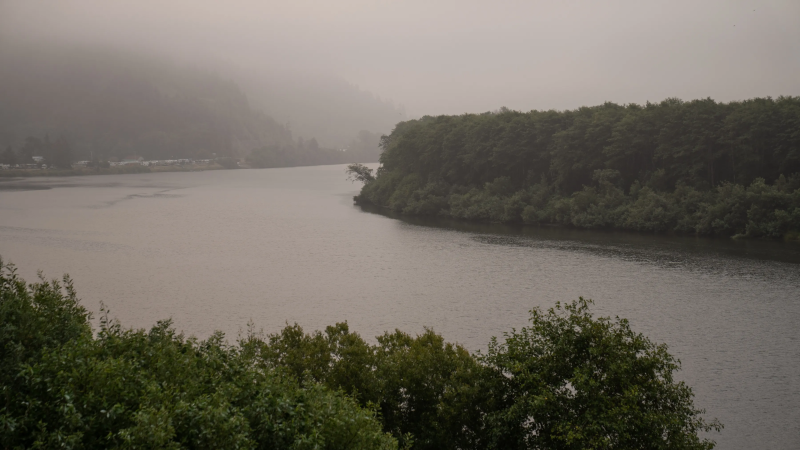
A once-mighty river grows sick
The Klamath River wends its way 263 miles through Northern California and southern Oregon. Its watershed covers 9.4 million acres, an area larger than nine U.S. states.
The river and its tributaries once were the West Coast's third-largest producer of salmon. Tribal peoples prospered from the salmon as well as steelhead, lamprey, abalone and surf fish.
According to a paper by attorney and historian Dane Durham, nearly 10,000 inhabitants of the Klamath and Trinity watersheds consumed more than 2 million pounds of salmon annually from runs exceeding 500,000 fish before the arrival of gold miners and other settlers.
The river fed towering oak and tanoak trees, berry bushes and other food, basketry and medicinal plants. Hazel provided both nuts and a sturdy rod for baskets in the lower basin. Pond turtles enjoyed the cool waters, and land-based wildlife also nourished themselves on the Klamath's abundance.
Careful stewardship, including burning around villages and along trade routes, kept people safe from the wildfires that Western forests need to keep healthy. The smoke from the fires shaded the river and its tributaries, cooling the water to speed salmon on their way to cold-water spawning and juvenile habitat sites.
The discovery of gold in California's streams and rivers brought starvation, terror and mass murder to Indigenous peoples. Some accounts estimated that settlers massacred about 80% of Indians in California between 1850, when California became a U.S. state, and 1875.
Their first extended encounters occurred during a series of treaty negotiations in 1851-52, when three Indian agents were sent to get California Indian tribes to cede their lands and agree to move to several reservations, give up their traditional pursuits and become farmers.
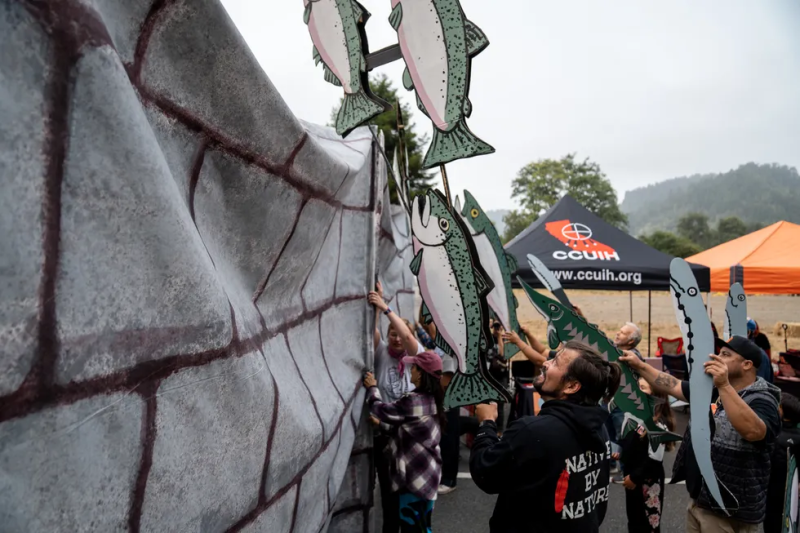
The treaties were never ratified, and California tribes were left to the mercy of a state government that sought to eradicate them. Instead of protecting Native rights, California enacted a law that enabled any Indian not found to be employed to be taken and sold into servitude. The law also enabled taking children as young as 2 and selling them into indenture.
The state also funded "death squads" to kill any Indians they could find for a bounty. The books "Murder State" and "An American Genocide: The United States and the California Indian Catastrophe, 1846-1873" tell in sometimes graphic detail about the campaign to wipe all Indians from California.
An 1852 article in the Sacramento Daily Union discussed the "Indian troubles" along the Klamath after tribal members fought to retain their lands and waters: "The depredations of the tribes increase as the country fills up with emigrants, and there is no doubt that the Indians must soon be removed by the Government Agents, or be exterminated by the sword of the whites."
Soon the government established reservations and herded Native peoples onto them. Some tribes like the Karuk lost control over their sacred and culturally important sites. The 3,500-member tribe whose lands are upriver from the Yurok only regained control over Katimiîn and Ameekyáaraam this year after Congress authorized removing the site from the U.S. Forest Service and placing it into tribal trust status.
That's in contrast to Arizona where tribes continue to fight for their right to worship on sites located on public lands.
Klamath River dams bring electricity by removing Native peoples and fish habitat
In the early 20th century, the Shastas were fighting to maintain control over their land. But the government had other plans, not only for Shasta land but for the fish that depended on an uninterrupted flow and the quiet pools where they bred new generations.
The Siskiyou Electric Light and Power Company began constructing the first of the dams, Copco No. 1, in 1910. The company was reorganized as the California-Oregon Power Company, or Copco.
Between 1910 and 1962, the company built three more dams — Copco No. 2, J.C. Boyle and Iron Gate — to bring electricity to Northern California and southern Oregon. But while the dams brought electricity to Siskiyou County and other parts of Northern California, they also cut off access to salmon and steelhead spawning grounds. A 1921 article in the Evening Herald in Klamath Falls, Oregon, sourced by its successor the Herald and News, asked if the need for electric service legally outranked the food supply for Indians.
Other tribes like the Shasta managed to hold on to parts of their ancestral lands through marriage with Native or non-Native landholders to rebuild and consolidate their land base or by obtaining land allotments through the Dawes Act.
The Shastas lost their land to eminent domain starting in 1911, as Copco No. 1 rose to block Ward’s Canyon. The dam drowned parts of the Shasta lands under the first of the reservoirs.
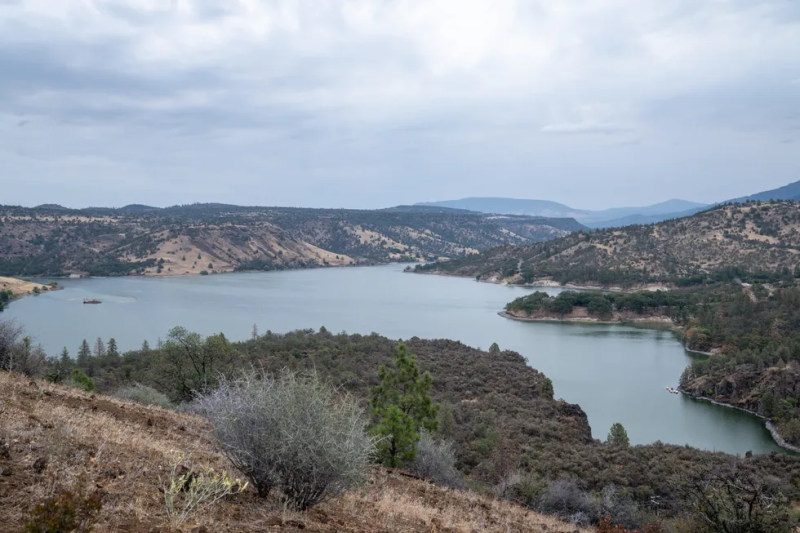
The fish, once so abundant that people could practically use them as a bridge across rivers and creeks during the spring and fall runs, spiraled into near-extinction. Both subsistence and commercial fisheries suffered. The Pacific Fishery Management Council noted that in 2022, the fall Chinook salmon run was 42% below the levels allowed for a sustainable spawning population, or escapement.
The water trapped behind those dams is often toxic to fish and other species, including people. The shallow reservoirs act as water heaters. Nutrients gathering in those warm waters feed toxic blue-green algae and degrade water quality.
Farms moving into the drained portions of Tule Lake and Lower Klamath Lake added more pressure to the overall watershed. Water was diverted from rivers, creeks and groundwater to grow alfalfa, potatoes, onions and other crops, and agricultural runoff into Upper Klamath Lake contributed to the same toxic conditions that afflicts the Copco, Iron Gate and J.C. Boyle reservoirs.
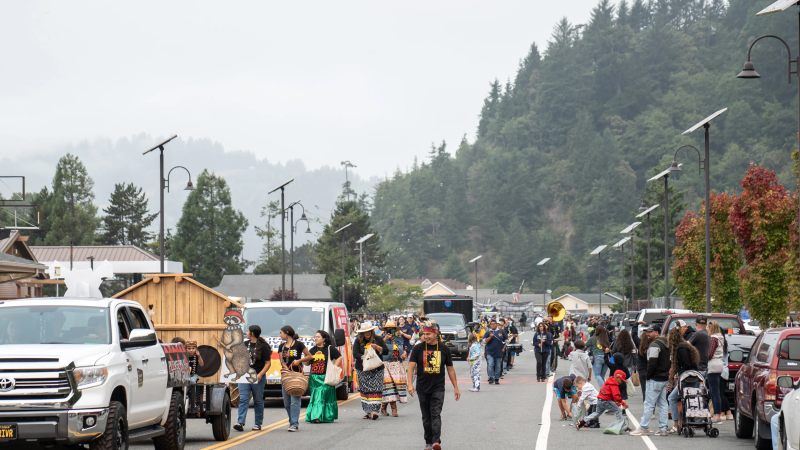
Coupled with naturally-occurring phosphorus from rivers and creeks, the Upper Klamath Lake at times grew so toxic that people were advised not to enter it. At one point, the upper reaches of the Sprague River, one of the lake's larger sources, were channeled through dikes constructed by the U.S. Army Corps of Engineers to create pastureland, and wetlands that would absorb the phosphorus were drained.
The Klamath River's tributaries have also been affected. The Scott and Shasta rivers, which are important salmon habitat, shrank after diversions by farmers and ranchers. The Trinity River, the largest tributary, has seen most of its water diverted to quench thirsty Los Angelenos, further decreasing water flows as well as salmon and steelhead spawning.
Tribes also lost land to federal action. The Karuk lost virtually all their ancestral lands when two national forests were established in the late 19th century and the mid-20th century.
The U.S. Forest Service's policy of fire suppression and allowing logging companies onto the lands led to clear-cutting and the creation of Douglas fir plantations that lack the biodiversity that once made this area rich in resources.
'Trading catastrophes': The 2001 'bucket brigade' and the fish kill of 2002
In April 2001, the Bureau of Reclamation shut off water to 240,000 acres of farmland in the Klamath Basin Irrigation Project to comply with Endangered Species Act requirements to preserve several native fish.
The c'waam, or Lost River suckers, and the koptu, or shortnose suckers, had been listed under the act in 1988 after severe losses due to algae growth and water diversions in the Upper Klamath Lake. In 1988, the Coho salmon in the Klamath was added to the list.
The farmers, some of whom had homesteaded the land beginning in 1908, and others the federal government had invited to the region after World War II, felt betrayed. They also learned that the Klamath Tribes, which had been terminated in the mid-20th century and restored in 1986, still held senior water rights and were using them to preserve Upper Klamath Lake fish.
The farmers struck back with a series of protests, including a "bucket brigade," where groups would form human chains to pass buckets of water to irrigation canals.
The following year, Reclamation reversed course and delivered water to farmers, leaving endangered fish high and dry. Water in Iron Gate Dam grew warmer, and when released, it flowed downstream to cause one of the most devastating ecological disasters in the river's history: the 2002 Fish Kill. Some people today call the events "trading catastrophes."
"I warned the federal government there was going to be a fish kill," said Susan Masten, who was then chair of the tribe. She had come home to Requa to stand with her family and tribe during the Yurok's legal battle to affirm their fishing rights. "And there was."
When all was said and done, up to 70,000 fish perished and toxins from the rotting corpses poisoned the water. Masten said that after that, the tribe saw the world out of balance and the tribe's way of life threatened.
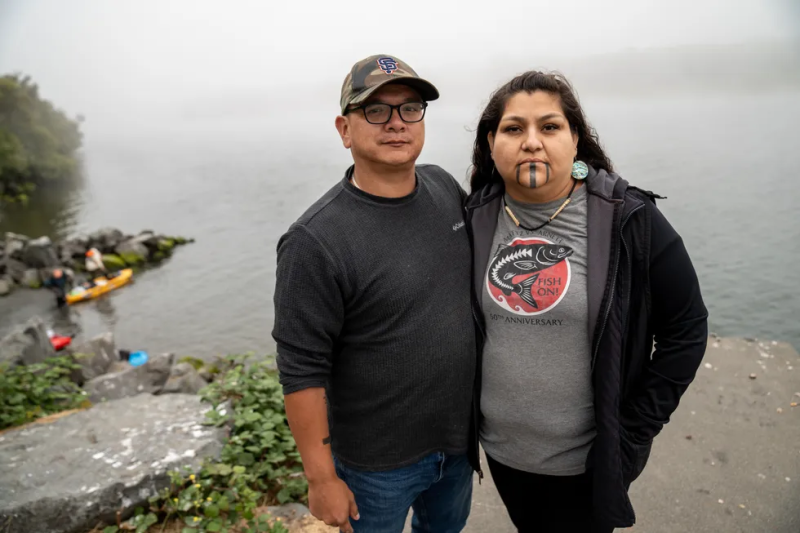
Oscar and Georgianna Gensaw recalled the horrific fish kill that spurred their community and others on the river to action. “During the Jump Dance (one of the 6,500-member tribe’s ceremonies), the kids said they could catch fish with their hands,” Georgianna said. “On the 10th day of the Jump Dance, the fish were dying.”
Dead, rotting fish pooled in the eddies of the river, creating an environmental, cultural and subsistence disaster up and down “the river,” as both Native and non-Native residents call the Klamath.
Masten also recalled that horrific time. "The stench was unimaginable," she told the Republic. "My heart and soul just felt sick."
The situation has worsened in the intervening 20 years as the river system struggles amid ongoing drought made worse by climate change, out-of-control wildfires that feed even more ash into the river and ongoing water diversions, both illegal and mandated by the Bureau of Reclamation to water farms in the Klamath Valley.
Algae and other toxins continue to plague the Klamath. In summer, the river’s cool water once served as a haven from daytime heat. No longer. Georgianna Gensaw said it’s difficult to tell her children that they can’t jump in the river to cool off when summer temperatures hit more than 105 degrees.
“We can’t bring our dog along on trips to the river because we’re scared he’ll drink from the river and possibly die,” she said.
A solution scuttled by politics
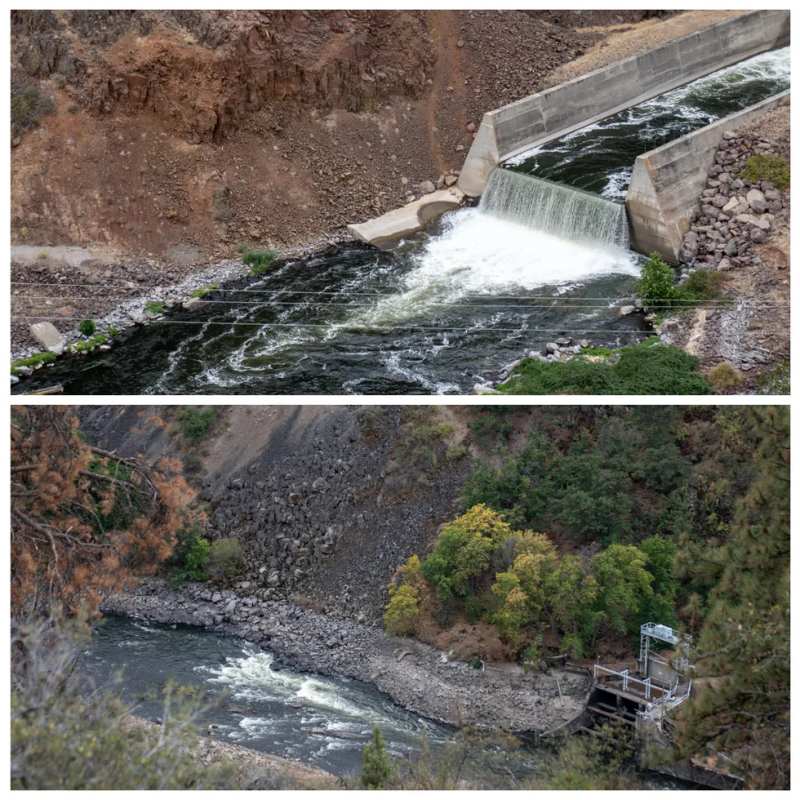
In the wake of the fish kill, tribes and environmentalists identified one of the main culprits standing in the way of reviving the salmon and sustaining their cultures: the four now-decommissioned dams about 30 miles northeast of Yreka near the Oregon border.
After the apocalyptic horror of seeing the center of their culture die, the Yuroks pushed hard to remove the dams, a goal since the 1990s, Masten said.
While everybody recognized the basin was ailing, nobody could agree on a solution until a group of local Native people, farmers and other locals reached an agreement that everybody could live with.
When Jim Root, a successful fruit farmer and exporter, purchased a ranch in the Upper Klamath basin, he saw how badly the creeks that eventually fed Upper Klamath Lake were managed.
Among other issues, feeder creeks had been overrun by cattle, resulting in fouled waters flowing into the lake.
"We had visited and fished the Klamath but I hadn't put the picture together," he said. Root started consulting with local Klamath tribal ranchers who had land allotments. "They came and walked the ranch with me and we talked tribal values for the land," he said.
When Reclamation cut off water to farmers in 2001, it was a "real shock and blow for everybody," Root said. "I needed to get involved."
Root and a coalition of farmers, the four counties and three federally recognized tribes on the Klamath River's mainstem, along with environmentalists and the representatives of California and Oregon, started meeting at a local restaurant to figure out how to fix the mess caused by a century of meddling. Root was careful to not call out the feds.
"It happens that the federal government's decisions didn't turn out well," he told The Republic.
Root said he managed to meet with PacifiCorp, by then the dam owners, about removal because he was a large customer, which he felt gave him leverage. But he insisted he was just a part of the overall team that negotiated and nudged the group into agreement.
After several years of discussion at the grassroots level, the Klamath Basin Restoration Agreement was finalized. The deal included dryland management, restoration of riparian zones along many of the Klamath's tributaries, removal of the four dams to facilitate salmon restoration, the promise of assured irrigation for the farmers and the purchase of the 90,000-acre Mazama Tree Farm for the Klamath Tribes, which have sought to rebuild its reservation lands. The Hoopa Tribe was involved in negotiations but stepped away because they didn't believe the deal included enough water for fish.
The agreement was signed by the governors of California and Oregon on Feb. 18, 2010, and the package was delivered to Congress to approve a $400 million package for fisheries restoration, reintroduction of salmon and other anadromous fish, and a fish monitoring project in exchange allowing farmers to take water for their crops.
The bill failed. At least one news account at the time points to the rise of the fiscally conservative Tea Party movement as a cause. Longtime Oregon Rep. Greg Walden filed a watered-down version of the agreement only two weeks before Congress adjourned for the year after Tea Party favorite Dennis Linthicum mounted a primary challenge.
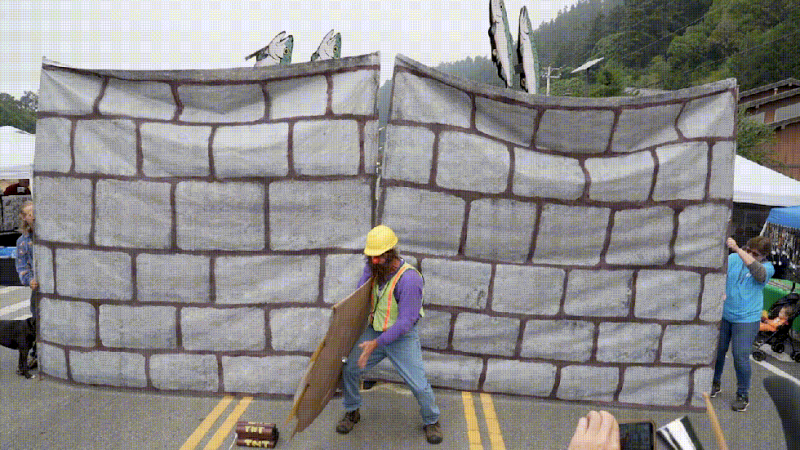
The bill failure cost years of trust. It also cost the Klamath Tribes the Mazama property. An Asian businessman purchased the property and intends to hold onto it.
But the dam removal agreement was still in play. The two states and PacifiCorp agreed to split the cost, and after more starts, stops, negotiations and setbacks, the Federal Energy Regulatory Commission signed off on a deal to remove the dams in November 2022.
The first dam, Copco No. 2, was removed over summer 2023.
But removing the dams is just part of the story. Tribes, environmentalists and some farmers are leading an effort to restore what they can throughout the basin, though the Klamath has been so damaged over the past 170 years that some people believe they won't live to see the end of that effort.
Next steps in a generations-long effort
Yurok Tribe's general counsel Amy Cordalis, also a tribal member, emphasized that the dam removal project is only part of what needs to happen to restore the entire basin to health. She said the struggle to preserve the river isn't about farmers versus fish as some observers label it, but about the health of an entire ecosystem.
And the Yuroks and other tribes want to move forward from the constant cycle of litigation with the feds.
"The last thing we want to do is keep suing the Bureau of Reclamation," she said. "We'd rather be problem solving and putting our legal efforts towards all this restorative work that we've been talking about."
But, Cordalis said, the bureau doesn't follow its own operations plans. "They never stick to those plans, and so they usually end up killing fish."
Tribes and other stakeholders in the basin have been meeting again on an all-of-basin restoration strategy to help break the cycle of inadequate or inconsistent water deliveries which cause havoc, fish deaths and continued ecological degradation.
"While others look for gains today with total disregard for the future, we're looking to protect our resources for tomorrow," Masten said.
Yurok Fisheries Director Barry McCovey said he realizes the river's recovery may take longer than his life span, but he's OK with that. The tribes' long efforts are for their grandchildren and generations to come, he said.
The tribes along the Klamath may not have to wait generations for the return of the salmon, though. Nine years after two dams were removed, the Lower Elwha Klallam Tribe held its first fishing season on a free-flowing river in more than a century, according to the Wenatchee World and the Seattle Times.
Oscar Gensaw expressed his optimism about the length of time salmon recovery will take: "Once the dams are down, the salmon will know what to do."
Debra Krol reports on Indigenous communities at the confluence of climate, culture and commerce in Arizona and the Intermountain West. Reach Krol at debra.krol@azcentral.com. Follow her on X, formerly Twitter @debkrol.
Coverage of Indigenous issues at the intersection of climate, culture and commerce is supported by the Catena Foundation.
Disclaimer: The copyright of this article belongs to the original author. Reposting this article is solely for the purpose of information dissemination and does not constitute any investment advice. If there is any infringement, please contact us immediately. We will make corrections or deletions as necessary. Thank you.





